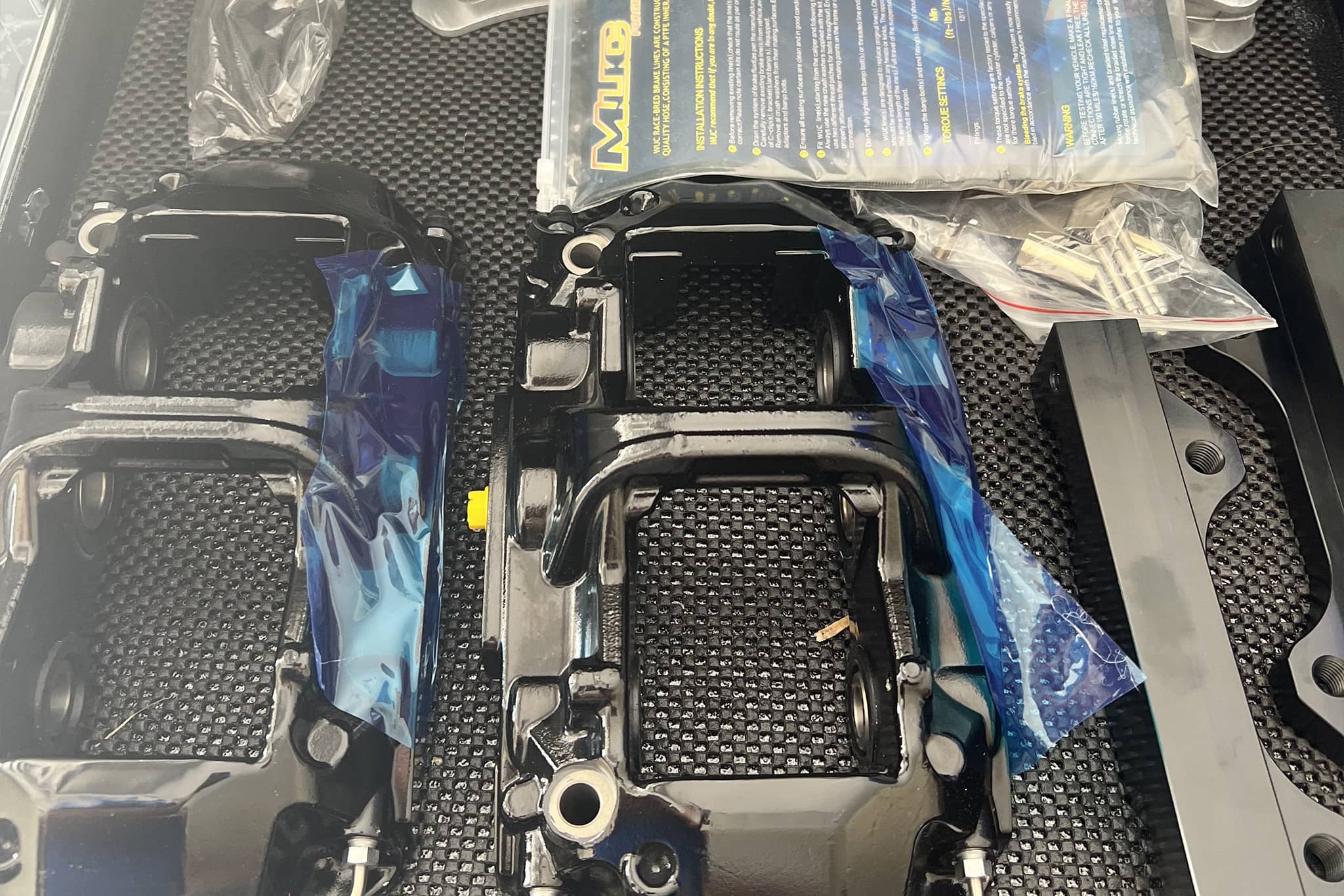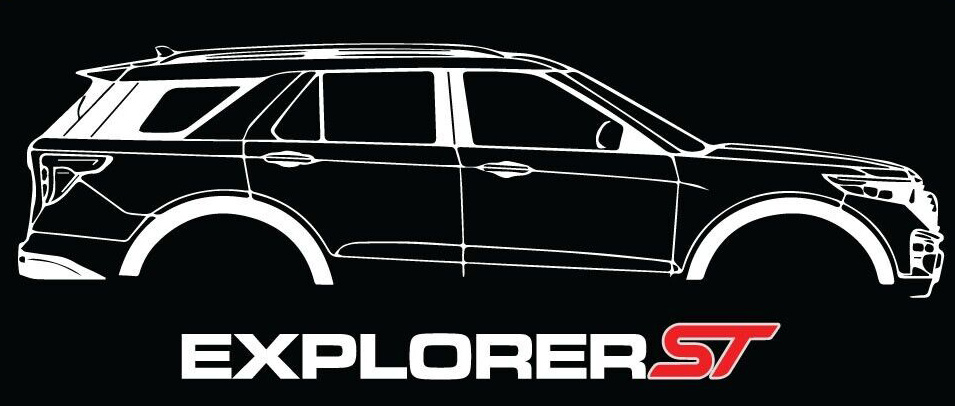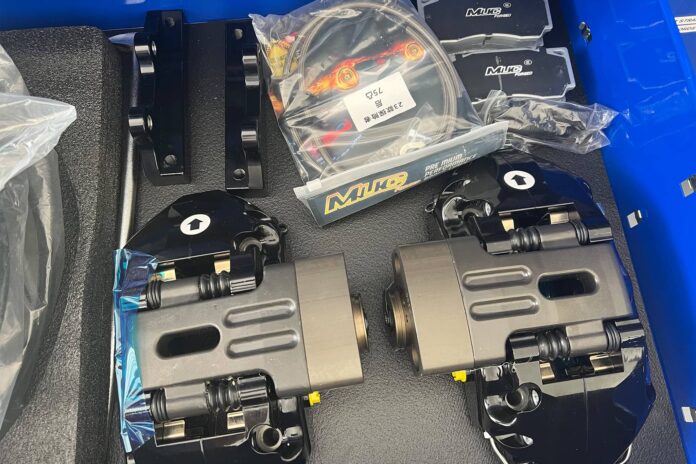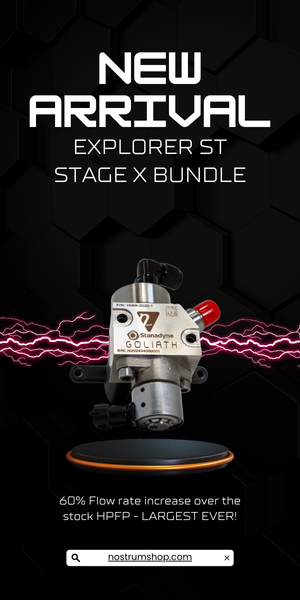The Ford Explorer ST is a performance-oriented SUV that combines practicality with power. However, as with any high-performance vehicle, the braking system plays a crucial role in ensuring safety and enhancing driving dynamics. This article delves into the differences between the stock braking system and aftermarket big brake kits (BBKs) for the Explorer ST, providing insights into their performance, benefits, and considerations for potential upgrades.
Understanding the Stock Braking System
The stock braking system on the Explorer ST is designed to offer a balance between everyday drivability and performance. It typically features:
-
Front Rotors: 345mm to 362mm in diameter, depending on the model year and trim.
-
Rear Rotors: Approximately 325mm to 355mm.
-
Calipers: Dual-piston front calipers and single-piston rear calipers.
-
Brake Pads: Standard semi-metallic or ceramic compounds.
While adequate for daily driving and occasional spirited runs, the stock setup may exhibit limitations under prolonged aggressive driving, such as brake fade and longer stopping distances.

The Case for Big Brake Kits
Big brake kits are aftermarket solutions designed to enhance braking performance. They typically include larger rotors, multi-piston calipers, high-performance brake pads, and stainless steel brake lines. The benefits of BBKs include:
-
Improved Heat Dissipation: Larger rotors and calipers help manage heat more effectively, reducing the risk of brake fade.
-
Enhanced Stopping Power: Increased clamping force and larger contact areas result in shorter stopping distances.
-
Better Pedal Feel: Multi-piston calipers provide more consistent and responsive braking.
-
Aesthetic Appeal: BBKs often feature eye-catching designs that complement the vehicle’s appearance.
Real-World Comparison: Stock vs. SuperForged BBK
A notable example highlighting the differences between stock brakes and a BBK comes from an Explorer ST owner who upgraded to a SuperForged BBK. Before the installation, the vehicle was equipped with wider, stickier tires (315/40/22 Michelin Pilot PS4 SUV ZP) and lowering springs. Using a Dragy device to measure braking performance from 60 mph, the results were as follows:
-
Stock Brakes with Upgraded Tires: Average stopping distance of 107 feet in 2.48 seconds.
-
Factory Stock Brakes: Approximately 114 feet to stop from 60 mph.
This improvement demonstrates the impact of tire upgrades on braking performance. However, the installation of the SuperForged BBK, featuring 405mm front and 385mm rear rotors with a two-piece design, is expected to further enhance braking efficiency, especially under high-stress conditions.
Considerations Before Upgrading
While BBKs offer significant advantages, several factors should be considered:
-
Cost: BBKs can be expensive, with prices varying based on brand and specifications.
-
Wheel Compatibility: Larger brake components may require aftermarket wheels with sufficient clearance.
-
Intended Use: For daily driving, stock brakes with upgraded pads and rotors may suffice. BBKs are more beneficial for track use or heavy-duty applications.
-
Maintenance: High-performance brake components may have different maintenance requirements and lifespans.
Alternative Upgrades
For those seeking improved braking without a full BBK, consider the following:
-
High-Performance Brake Pads: Upgrading to pads with better heat resistance and friction coefficients can enhance braking.
-
Slotted or Drilled Rotors: These rotors offer improved heat dissipation and reduced brake fade.
-
Stainless Steel Brake Lines: They provide a firmer pedal feel by reducing line expansion under pressure.
-
Brake Fluid: Using high-temperature brake fluid can prevent boiling under extreme conditions.
Final Thoughts
Upgrading the braking system of the Ford Explorer ST can lead to significant improvements in performance and safety. While big brake kits offer the most substantial enhancements, they come with higher costs and considerations. For many drivers, targeted upgrades like high-performance pads and rotors may provide the desired improvements without the need for a full BBK. Ultimately, the choice depends on individual driving habits, performance goals, and budget.




